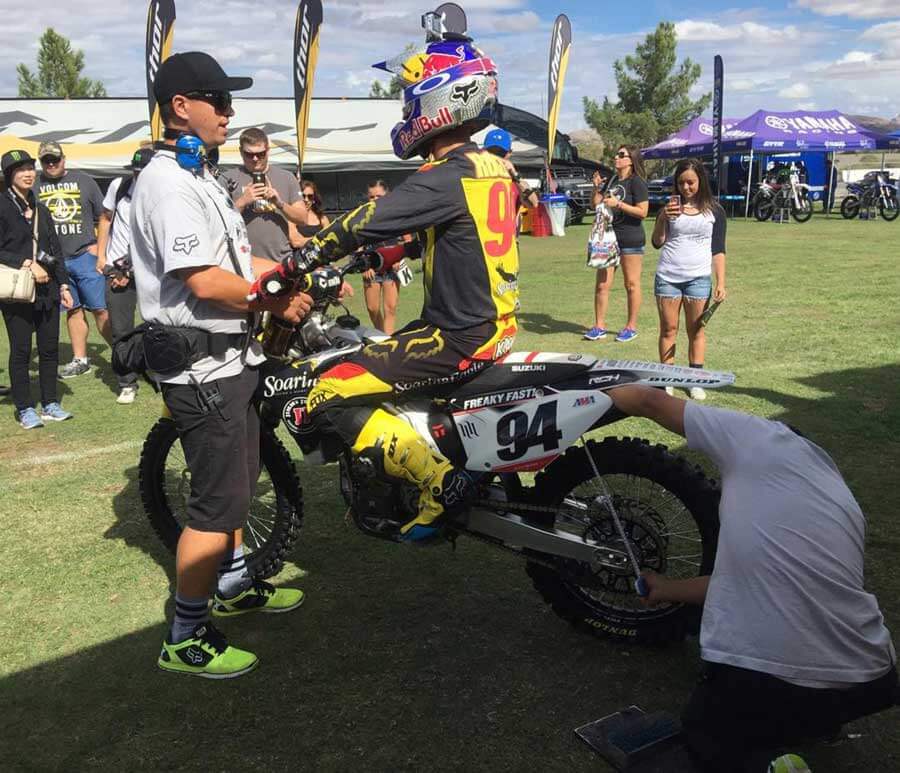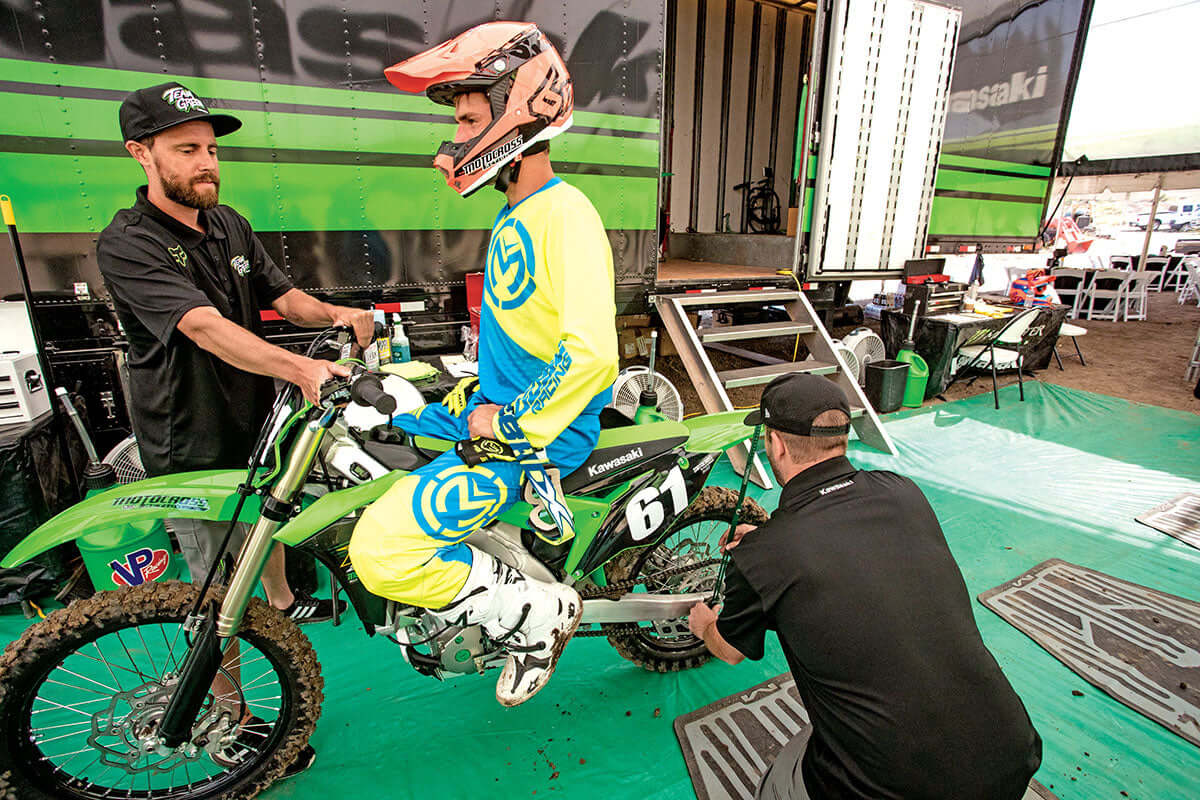I hear so many people that say that it doesn't matter where you measure sag on off-road bikes and that you just need to "know your number". This is absolutely false and flies in the face of decades of research and development. Every manufacturer has a method of taking the measurement which is based on decades of engineering and tens of thousands of hours of testing. This is to assure that the bike is balanced and handles the way they engineered it to. I see too many people try to do the right thing but end up making the wrong adjustments based on misinformation.
It is all about using the correct reference points, so many riders and suspension tuners measure to a place that is easy to locate, or measure to, like the seam between the fender and the side plate or, to a mark they make on the rear fender. This reference point may be easy to find but it won't get you the right measurement on most modern off-road bikes. For pretty much any off-road bike, except for the 2016 and newer KTM and Husqvarnas, you actually need to account for the arc of the axle when you take the measurement. If you measure vertically on these bikes, you will end up running the spring too tight and the bike will not handle properly.
Say that the Suzuki owner's manual says to set the the sag to 105mm on an RM-Z250 and to measure from the back of the seat bolt to the tip of the rear axle. Now, an average rider reads the owner's manual and sees that they need to set it to 105mm but they have read somewhere that you need to measure this vertically or that it does not matter where you measure. Now we have a big problem, by measuring vertically the rider will end up putting too much preload on the spring and actually be running more like 95-98mm of sag according to Suzuki. The result is a bike that is unstable at speed and overall very busy and unpredictable. You will end up trying to compensate with compression and rebound damping and now your suspension is all out of whack. If this had been measured correctly, the rider would find they have a bike a bike that is more settled, balanced, predictable and is also more stable at speed, turns better and is way more fun to ride!
Wether you ride street, ADV, dual-sport or off-road, you should always follow the manufacturer's recommendations when adjusting your suspension. There is way too much misinformation out there these days and you know you can count on the manufacturer to know how to get the bike setup properly. Don't fall into the trap of believing a friend or some guy at the track over the people that actually engineered the bike.
Our Slacker digital sag scale was developed over the course of almost 3 years to take the measurements specifically based on the manufacturer's recommendation as well as leading suspension tuners like Factory Connection, Pro Circuit and MB1 suspension. Slacker gets you the right measurement so you will always make the right adjustment. You don't have to use Slacker to setup your bike but you do have to take the measurement correctly!



